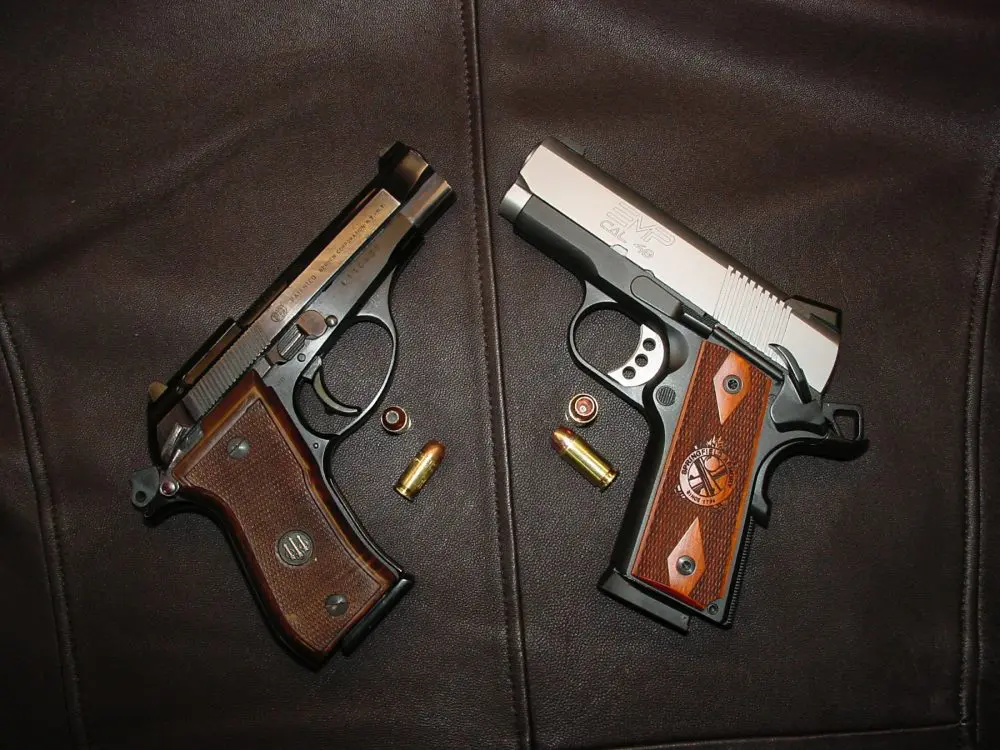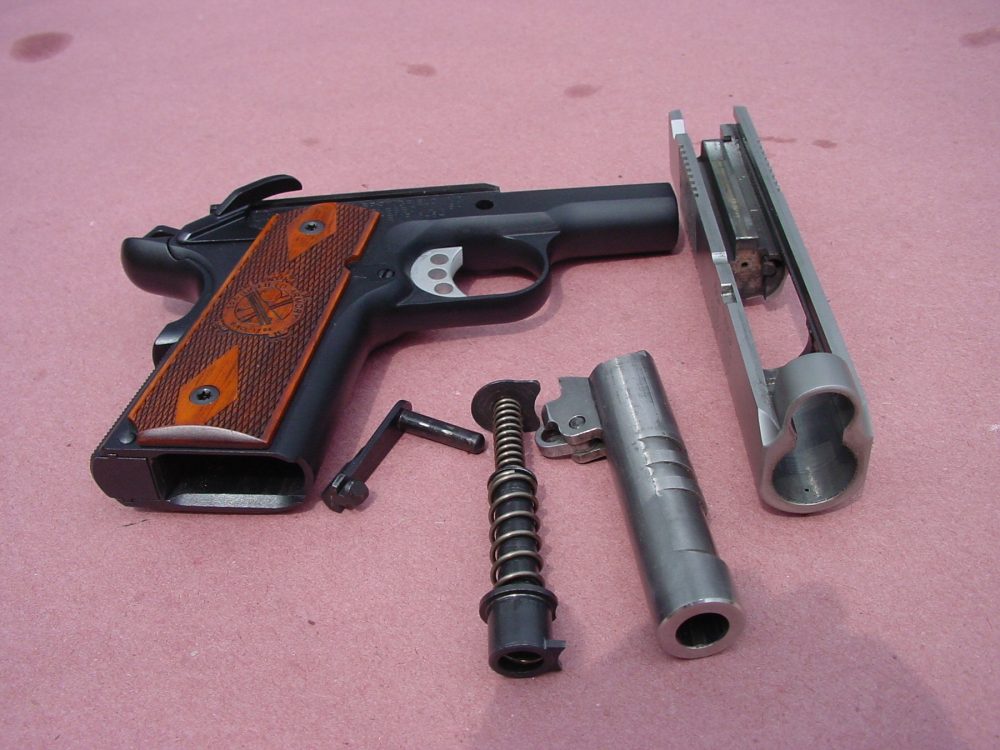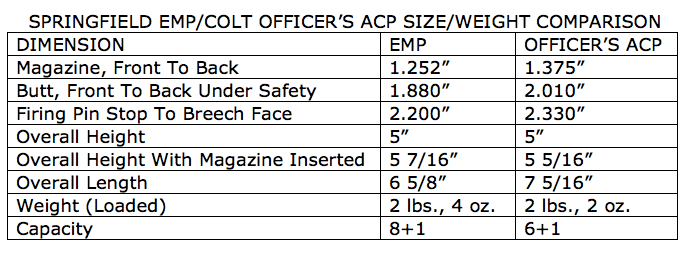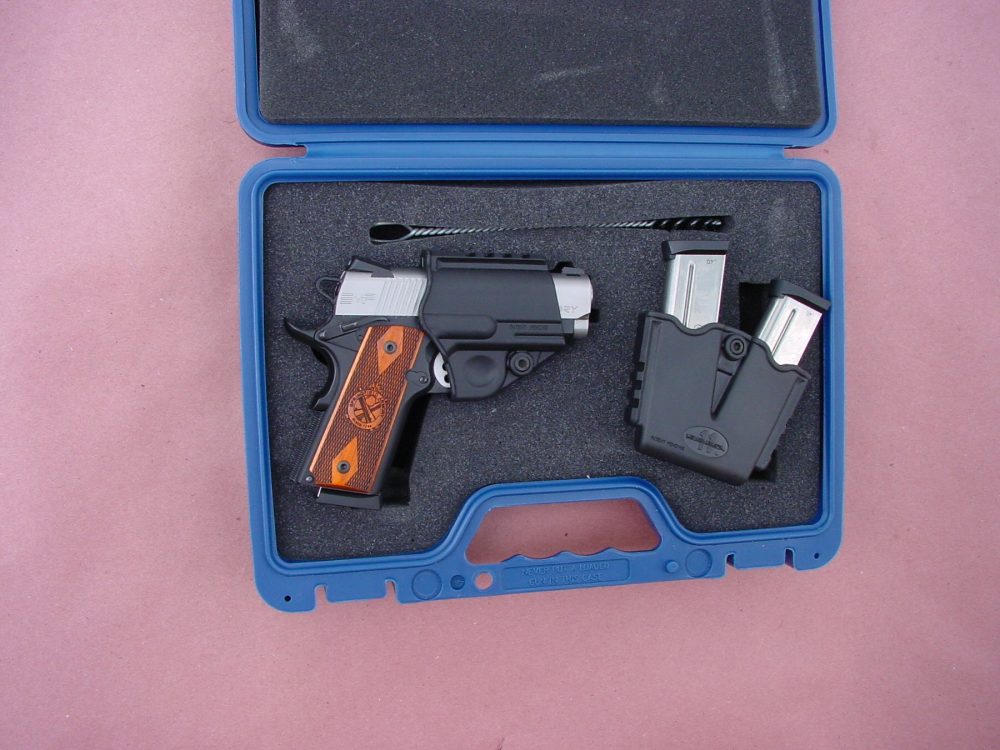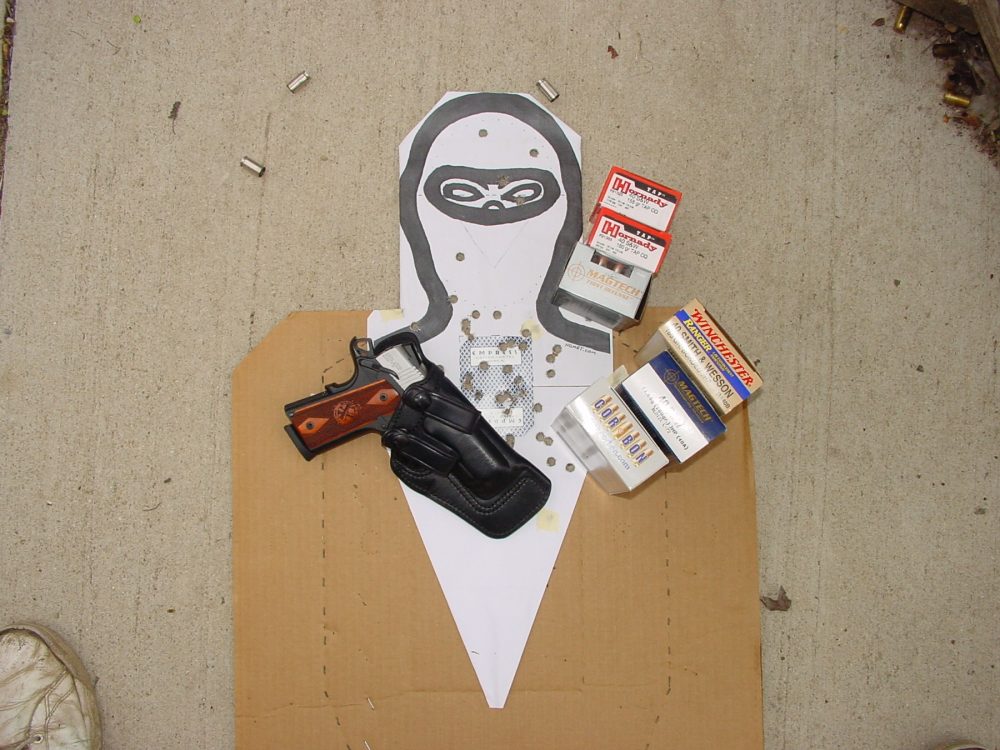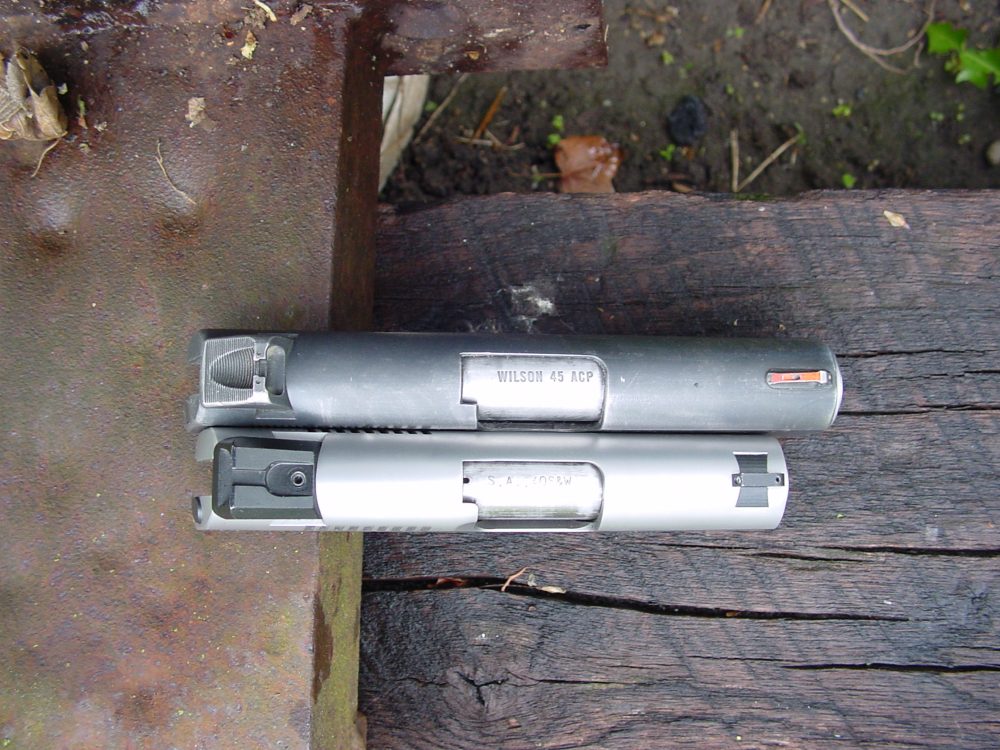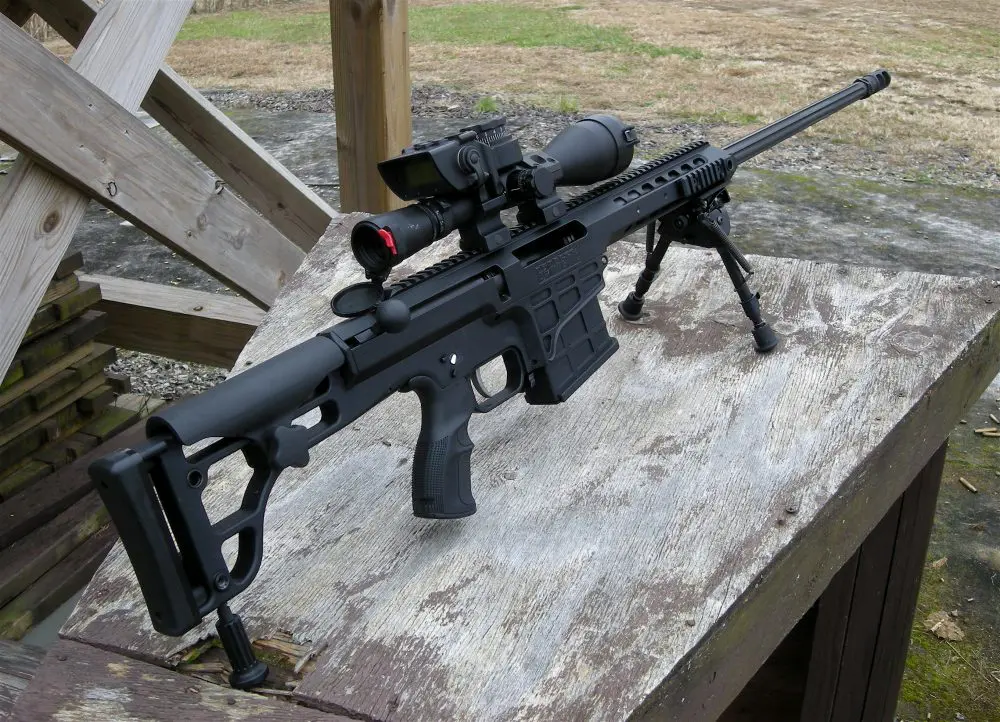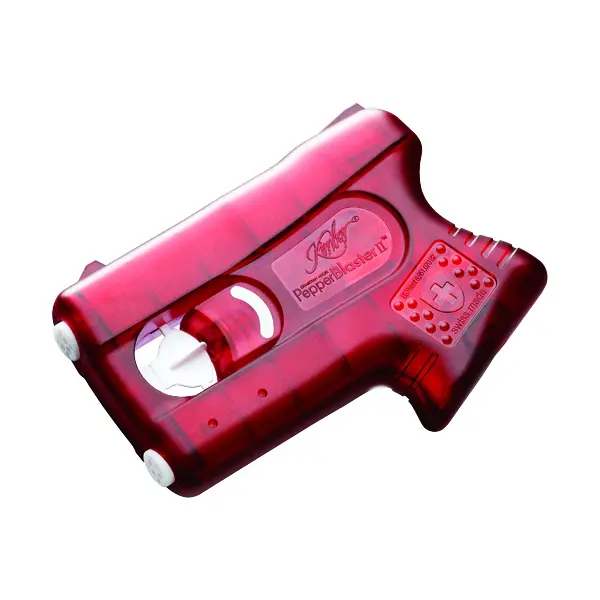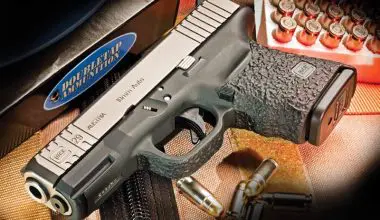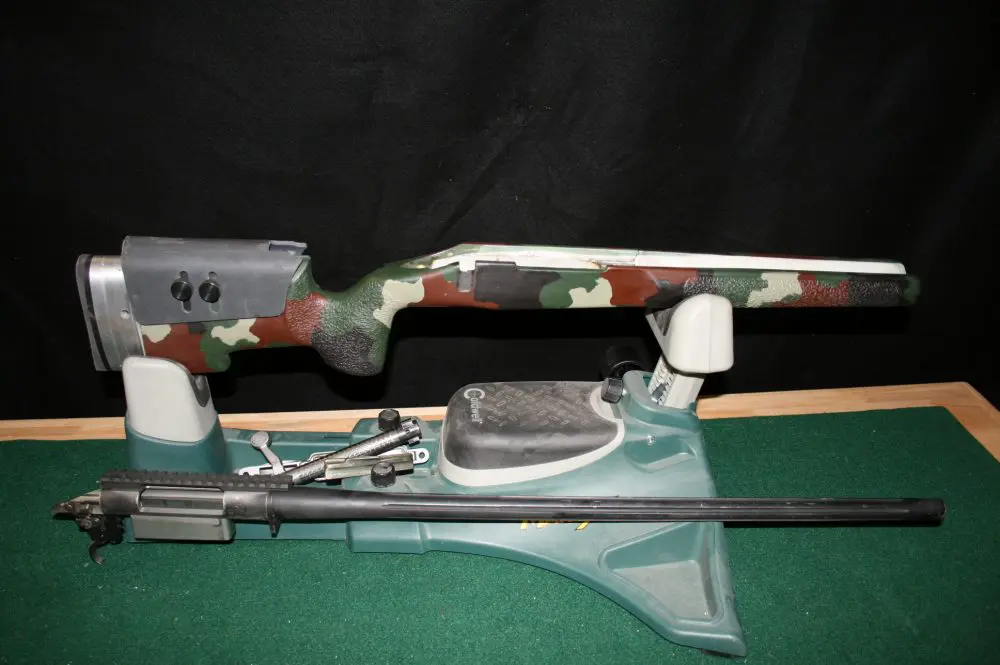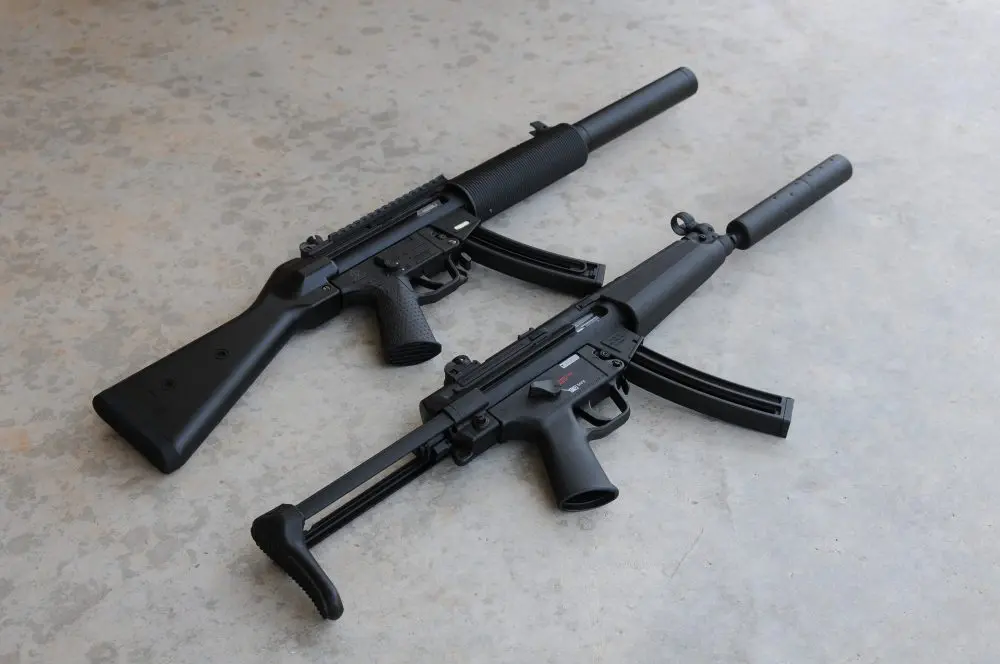Springfield Armory .40-caliber EMP is actually smaller than this Beretta .380 in length and width, and just a tad taller with slightly extended magazine in place. Both hold the same number of rounds. EMP’s .40 cal delivers more than twice the energy in foot-pounds.
Things have a way of finding a level. Toss a gallon of ice cubes into a gallon of scalding water: the ice gets warmed and melts, the water gets cooled down, and before long you have two gallons (or so) of warm water.
Any two opposing forces, given enough time working against each other, eventually come to a middle ground. Springfield Armory’s .40-caliber Enhanced Micro Pistol (EMP) might just be the defensive pistol embodiment of this universal law. It’s the culmination of years of big-bore caliber and magazine capacity grinding up against compact size on the drawing tables and CAD stations of firearms designers.
The .40 S&W may be the maximum caliber suitable for a 1911-pattern pistol of this size, and the EMP may be about as small as one should go in a .40-caliber pistol and still maintain sufficient reliability (first and foremost, always), shootability, capacity, concealability, and durability.
EMP’s slide and ramped, bushingless bull barrel are stainless; frame and everything on it feature Springfield’s Armory Coat finish in black. Novak night sights, beavertail grip safety, ambidextrous thumb safety, and beveled mag well are nice touches.
In assessing the EMP, it is important to note that it is more than another 1911 that has simply been shortened on the muzzle and butt. It is, in fact, a 1911-pattern pistol that has been almost completely redesigned, re-proportioned and scaled down for two smaller-than-.45 calibers—.40 S&W and 9mm. The relative shortness of these two rounds allowed the EMP’s daddy, Springfield Custom Shop guru Dave Williams, to shrink the 1911 around the smaller cartridges.
From what I have learned by shooting and examining two 9mm EMPs—and the subject .40 S&W of this article—it was done right. This is not to say the EMP is necessarily perfect for everyone, but if you carry a 1911 and wish it could be smaller and lighter, and don’t think you’re ballistically hamstrung by its .40 S&W caliber, the EMP bears checking into.
The out-of-production .45-caliber Colt Officer’s ACP is not Colt’s smallest-ever 1911 offering, but it’s what I had handy (the Defender and New Agent are about 5/8″ shorter). Comparing the .40 EMP to it highlights the fact that the EMP is shrunk in ways more involved than just shortening the ends (See Table Below).
Four ounces is not a lot of loaded weight difference, but if you say “a quarter pound less and two extra rounds,” it sounds better. For me, the biggest plus offered by the EMP is the greatly reduced circumference of the butt. Thanks to the 1/8-inch shorter round, the magazine is commensurately smaller, so the front-to-back dimension of the butt is 1/8 inch smaller. It might not sound like much, but it affords the hand significantly more “wrap,” giving better control, especially for smaller hands. The very thin grips augment the “I’ve got a real grasp on this thing” sensation. For 1911-accustomed hands, it is still a 1911, in a meaningful caliber, but smaller than some .380s.
In the Table, I included the overall heights with and without a magazine inserted to highlight a particular area that I hope Springfield will address. Although the three provided magazines are flawless in function and appearance, Springfield cheated a little to get an extra round of capacity by letting the magazine extend about 5/16 inch below the pistol.
This is pretty common in pistol designs these days, but since we obviously carry a pistol with a magazine in place, if it protrudes from the butt, it costs in terms of concealability. And concealability is a big part of what the EMP is supposed to be about, so my official request to Springfield would be, please provide the EMP with one magazine shortened to flush with the bottom of the butt. Yes, that would cut the capacity to 7+1, but I’ll take the one-round capacity hit for the upgrade in being discreet.
The slide is shorter from the breech face forward, and, unlike any of the “chopped” 1911s, it is also shorter from the breech face to the back. Standard 1911 firing pins and extractors would be too long for the EMP. The length of slide stroke after the recoiling slide’s breech face passes over the rim of the top round in the magazine is the same as that of Commander-length 1911s. This is critical, because the time it takes the slide to travel this distance is the time available for the next round in the magazine to present itself and “wait” to be fed into the chamber.
After the breech face clears the magazine’s top round, it travels another .420 inch or so, comes to a solid stop, and has to travel that same distance forward again before contacting the top round and starting to feed it. Some of the uber-short 1911s have this dimension reduced to a point that makes them irritatingly finicky about ammunition, magazine springs, and recoil springs.
Padded case, holster and dual magazine pouch come with just about everything from Springfield these days. EMP comes with three magazines. Author feels one should be provided without slight downward extension. While it would reduce capacity from eight rounds to seven, it would also enhance concealability.
ACCURATE ENOUGH?
Could the stubby EMP measure up accuracy-wise? Logic and conventional wisdom each raise an eyebrow and ask, “Don’t we need to give up decent grouping ability in exchange for the lighter weight and compact size?”
I found the EMP to be way beyond what most people would consider adequate for defensive use. With a wide variety of loads, from sandbags, it was quite capable of shooting into three inches or less at 28 yards (1,000 inches). Very few groups went over four inches.
With the Hornady 180-gr. TAP CQ, groups were two inches (eight shots) and, once, less. CorBon 165-gr. FMJs put eight into 2 ½ inches. CorBon 135-gr. JHPs gave a 2 ¼-inch, eight-shot group. These are darn good results for any 1911.
Some may declare this level of accuracy unnecessary, since real men have their gunfights at (insert your favorite guru’s single-digit distance in feet or inches here). And some people still think that accuracy must come with a reliability penalty, as the gun must be “too tight.” To the first I say, nonsense—more accuracy is always better than less. Being able to accurately place your shots should the need arise is much better than not being able to, and is a tremendous confidence booster. Less accuracy does not somehow equate to a higher level of manliness.
Regarding the reliability penalty, I’ll just say, not necessarily, especially in recent years when pistol barrels have, in my opinion, gotten much better. No reliability issues presented themselves in the EMP other than the unrelated-to-shortness need to increase extractor tension a bit after two empties were left in the feedway in the first 50 or so rounds. After that—another 350 rounds—there were no function problems of any kind.
My only accuracy-related gripe is that the EMP shot four to five inches high at 28 yards. I see this a lot in 1911s of all sizes, and pistols in general. They often do not come from the factory very well sighted in, and truth be told, most shooters don’t notice or don’t care.
Ammo tested: various CorBon hollow points including DPX, Hornady TAP CQ, MagTech SCHPs (Solid Copper Hollow Points), Winchester bonded SXT. MagTechs were noticeably lighter in recoil but louder. Best groups were from Hornady and CorBon. Light or heavy, the EMP didn’t care—eight-shot groups under 2 ½ inches at 28 yards were had with both 135- and 180-grain bullets. Ramped barrel fed all hollow points with gusto. Inside-the-waistband holster is the way to go with something like the EMP—this one is by 5-Shot Leather.
Now if it’s a pistol/shooter combination that can only hold a 25-yard, 24-inch group anyway, and the shooter is convinced that he will never have to shoot to beyond, say, 15 yards, maybe it really doesn’t matter that much.
However, when the pistol/shooter can hit a Red Delicious from across the street, it makes sense to take advantage of this accuracy potential by having it perfectly sighted in. Springfield replaced the front sight for me with no drama, and being higher, it brought the point of impact down for a perfect 28-yard zero.
MIM-ophobes will decry Springfield’s use of some Metal Injection Molded components. My opinion is that the whole MIM thing has been blown way out of proportion. As with any process, done right, the parts are fine. In my experience, the Springfield MIM parts are good to go.
All the EMPs I’ve handled had decent triggers. The test subject’s safety had perfect safety actuation efforts, crisp and positive, a short throw with no bounce-back. This varies greatly from 1911 to 1911, and the last EMP I handled was a little mushy in this department—but some people prefer that.
Side-by-side shot of Colt Officer’s ACP and Springfield EMP slides. With breech faces lined up, it can be seen that the EMP’s is shorter at the back as well as at the front. EMP is not just chopped, it is scaled down.
From the department of you-don’t-get-something-for-nothing, takedown of the EMP is difficult without the use of a special tool (provided) to get the Seecamp-patent, twin-spring, telescoping guide rod out. The guide rod did start to unthread from its flange—it should have been LocTited or better yet, staked, at the factory.
Minor gripes all, from a 1911 point of view. When the overall package is comprised of solid components, put together right, is reliable, and shoots this well, it’s worth a look. Add the potency-to-size ratio and the ergonomic enhancement afforded by the reduced grip girth, and it’s worth a second look.
SOURCES:
Springfield Armory
Dept. S.W.A.T.
420 West Main St.
Geneseo, IL 61254
(800) 680-6866
www.springfield-armory.com
CorBon
Dept. S.W.A.T.
P.O. Box 369
Sturgis, SD 57785
(800) 626-7266
www.corbon.com
Hornady Mfg. Co.
Dept. S.W.A.T.
Box 1848
Grand Island, NE 68802-1848
(800) 338-3220
www.hornady.com
